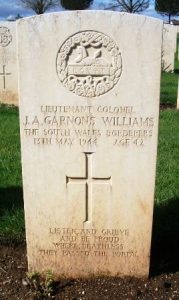Abercamlais is a grand country house near Brecon, the county town of the historic county of Breconshire, situated between Brecon and Sennybridge and possibly dates back to the Middle Ages. Less than half a mile downstream is Penpont Manor House, which shares much of its history with Abercamlais due to them both being owned by the same family, Garnons Williams. The family traces its roots back to the Norman invasion, when Bernard de Neufmarché, one of William the Conquerors knights, became Lord of Brecon, as amongst his knights was Sir Thomas de Boulogne, the direct ancestor of the family, who was gifted the land around Talgarth and Wernfawr and much of the upper Usk valley, for his services. The family thus became the owners of Abercamlais and Penpont. Many of the descendants of the family joined the cloth and became Clerk’s in Holy Orders, whilst many of their sons joined the armed forces, serving in all of the services over the generations. Abercamlais is still under the ownership of the Garnons Williams family, a family who sacrificed more than many during both World Wars. This page commemorates the sacrifice of this family, the Garnons Williams family, of Abercamlais.
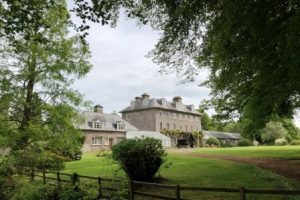
The Great War, 1914-1918
Alexander Aylmer Curtis Garnons Williams, MC, Captain, Royal Flying Corps. Alexander was born in Kensington on 2 April 1896, the son of Captain Aylmer Herbert Garnons Williams, RN, and Edith Letitia Garnons Williams (nee Ward). He was baptised at the Parish Church, Bettws Penpont on 17 May 1896. Alexander was educated at The Lees, Hoylake and at Bradfield College, in Reading, before volunteering to enlist into the army on 14 August 1914, becoming a Motor Despatch Rider. On the following month he was commissioned as Second Lieutenant into the South Wales Borderers and was drafted to France in April 1915, joining the 1st Battalion, South Wales Borderers, which was in the Givenchy area. Alexander served for the coming months with the battalion, seeing action during the Battle of Loos in September 1915, and on the Somme in the summer of 1916, where he was wounded whilst performing an act of gallantry which saw him awarded the Military cross. The citation, published in the London Gazette of 14 November 1916, read: ‘For conspicuous gallantry in action. He led his company with great gallantry in the attack. He showed a fine example to his men and kept them well in hand. He was wounded.’ By now he had been promoted to Captain. Once recovered from his wounds, he volunteered for the Royal Flying Corps in March 1917 and was posted to 37 Squadron, gaining his pilots certificate in August that year. He was then posted to 112 Squadron, which was based at Throwley in Kent. On 14 May 1918, Alexander was flying a Sopwith Camel, Serial D6625 on a practise flight when he lost control and the aircraft spun into the ground, killing him instantly. The 22-year-old was buried with full military honours in Hills Cemetery, Horsham in a service officiated over by his uncle, Reverend Arthur Garnons Williams, of Penpont.
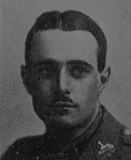
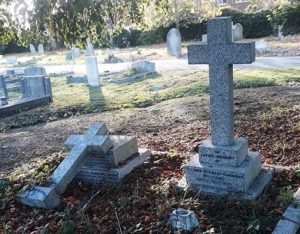
Harold Penry Garnons Williams, Private, 760676, London Regiment. Harold was born on 26 November 1897, the son of Arthur Garnons Williams and Anna Jane Garnons Williams (nee Glennie), of Abercamlais. He was baptised at New Radnor on 18 January 1898. Harold was educated at Shrewsbury School, where he was a member of the Officer Training Corps. He enlisted into the 28th Battalion, The London Regiment (Artists Rifles) at Duke’s Road, Euston Road, London on 6 September 1916. The battalion was already in France and was at St. Omer being utilised as an Officer’s Training Corps, so when Harold embarked for France on 16 February 1917 to join the battalion, he did not immediately see action, but instead started being groomed for a possible commission. The battalion then became attached to 190 Brigade, 63rd (Royal Naval) Division on 28 June 1917, joining the division at Écoivres. The battalion then carried out several weeks of intense training before moving into the line at Railway Cutting, near Bailleul on 23 July to begin its first tour in the trenches. On 20 August Harold was admitted to the 149th Field Ambulance, suffering from shrapnel wounds to his hand, but was discharged two days later, returning to duty. At the beginning of October, the 63rd Division was relieved and began moving into the Ypres Salient, to join the great offensive for Passchendaele Ridge. On 29 October the Artist’s Rifles moved into the line near Albatross Farm and on the following morning, 30 October 1917, launched an assault upon the Lekkerbotterbeek, suffering terrible casualties during the day. Harold was among some 124 men posted as missing during the day, whilst some 210 others had been killed or wounded. The 19-year-old was later confirmed as having been killed in action that day. Harold has no known grave and is commemorated on the Tyne Cot Memorial, Belgium. His brother, Lieutenant-Colonel Joscelyn Arthur Garnons Williams, was killed in Italy in 1944.
Penry Garnons Williams, Fleet Surgeon, Royal Navy. Penry was born in 1874, the son of Reverend Garnons Williams and Catherine Frances Williams (nee Hort), of Penpont. He was baptised at Bettws Penpont on 19 April 1874. Penry was educated at St. Thomas’s Hospital, London, where he took the diplomas of M.R.C.S. and L.R.C.P. Lond. in 1899. He enlisted into the Royal Navy that same year and was promoted to staff surgeon on 15 May 1907. Penry married Teresa Mary Pike, of Camborne, in 1908, and the couple set up home at Elm Cottage, Milehouse, Devonport. He was serving aboard the Cruiser HMS Amphitrite at the outbreak of war, then in the summer of 1916 was promoted to Fleet Surgeon and was posted aboard the Devonshire-class armoured cruiser, HMS Hampshire. The cruiser had just become attached to the 2nd Cruiser Squadron when Penry came aboard and was present at the Battle of Jutland, although she was never actually engaged and only fired four salvos at the German II Scouting Group that fell short of their targets. Immediately after the battle, Hampshire was ordered to carry Lord Kitchener from Scapa Flow on a diplomatic mission to Russia via the port of Arkhangelsk. Due to heavy gales, it was decided that Hampshire would sail through the Pentland Firth, then turn north along the western coast of the Orkney Islands, which would give the cruiser some shelter and at 17.45 rendezvoused with her two escorts, the Acasta-class destroyers Unity and Victor. As the ships turned to the northwest, the gale shifted direction and the destroyers began to fall behind, so were ordered back to Scapa Flow, leaving Hampshire unescorted. At around 19.40 on 5 June 1916, Hampshire struck a mine which had been laid by the German submarine U-95 a week previously and was holed by the resulting explosion, sinking within fifteen minutes. Due to the heavy seas, only twelve of her crew survived. Penry, Kitchener and some 735 other men lost their lives. Penry was 42 years old when he died in the sinking of HMS Hampshire. His body was later recovered from the sea, and he was buried in Lyness Royal Naval Cemetery, Orkney.
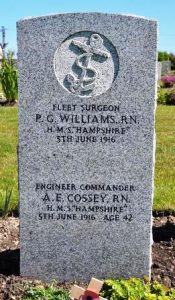
Richard Davies Garnons Williams, Lieutenant-Colonel, Royal Fusiliers (City of London Regiment). Richard was born at Llowes, Radnorshire on 15 June 1856, the son of Reverend Garnons Williams and Catherine Francis Williams (nee Hort). His father later became Vicar of St. John’s, Brecon. Richard was educated at Magdalen College School, Oxford and at Trinity College, Cambridge. Richard became known as a talented rugby player and upon leaving Cambridge, was accepted into the Royal Military Academy at Sandhurst, where he played rugby for the Sandhurst Rugby Team. Richard completed his officer training in 1876 and was commissioned as a sub-lieutenant into the 38th Regiment of Foot, before transferring to the 7th Regiment of Foot the following year. He continued to play rugby and during his first years in the army played for Brecon and for Newport RFC, where he became selected for Wales for its first ever rugby international against England in 1881. Richard married Alice Jessie Bircham at Chelsea on 8 January 1885, and the couple had one child, a daughter, Barbara, who later married Captain Hume Buckley Roderick of the Welsh Guards. By February 1885 Richard had been promoted to captain, and his unit had been renamed the Royal Fusiliers (City of London Regiment). Upon retiring from the army on 4 May 1892, Richard was commissioned as major in the 1st (Brecknockshire) Volunteer Battalion, South Wales Borderers, before being appointed Brigade Major for the South Wales Brigade of the Volunteer Force and became a well-known figure in Brecon. By the time that Richard resigned his commission in 1906 he had been promoted to Lieutenant-Colonel. He re-joined the Army shortly after the outbreak of war and re-joined his original regiment after being posted to the 12th Battalion, Royal Fusiliers. He was then given temporary command of the Brecknock Battalion, South Wales Borderers for a while, before assuming command of the 12th Battalion, Royal Fusiliers. He joined the battalion at Pirbright, where it was attached to 73 Brigade, 24th Division, and on 1 September 1915 took his battalion to France. The battalion disembarked at Boulogne on the following day, before entraining for Montreuil and the men then marched to billets at Embry. Over the coming days the battalion trained and carried out practise attacks, as the 24th Division had received orders to move to the Loos sector. On 25 September the British launched a large-scale assault upon the German defences around the town of Loos but suffered terrible casualties in doing so. As a result, the inexperienced 24th Division was thrown into the fight, and moved to Vermelles later that day. The division moved into position that night and on the following morning, 26 September 1915, launched an assault on the German lines north-east of Vermelles. Richard was posted as wounded and missing during the early stages of the attack. It appears that he had been shot in the head and killed whilst trying to withdraw his men. No trace of the 59-year-old was ever found, so he is commemorated on the Loos Memorial to the missing, France. Richard was the eldest of thirteen former Welsh international rugby players to be killed during the war. He is not commemorated on the Brecon war memorial, but at nearby Hay-on-Wye. His son-in-law, Hume Buckley Roderick, was also killed during the war.
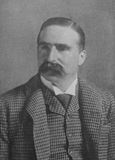
Thomas Garnons Williams, Private, 13048, Canadian Infantry. Thomas was born near Worcester on 20 April 1896, the son of Mark Penry Fenton Garnons Williams and Elizabeth Garnons Williams (nee Johnstone). He was baptised by his grandfather, Reverend Garnons Williams, at Bettws Penpont on 7 May 1896. Soon afterwards the family emigrated to Canada and settled at Quappelle Station, Saskatchewan. Thomas worked as a butcher at Maple Creek after leaving school but enlisted at Valcartier into the Canadian Expeditionary Force on 23 September 1914. He was then posted to the 4th Battalion, Canadian Infantry. The Battalion was raised at Valcartier, consisting of recruits from the 2nd Military District, which encompassed Aurora, Brampton, Brantford, Hamilton and Niagara Falls. Within weeks of its formation, the battalion embarked at Quebec on 3 October 1914 aboard the transport Tyrolia, bound for Britain and the battalion moved to Larkhill Camp for training. After landing in France on 11 February 1915, the battalion was attached to the 1st Canadian Infantry Brigade, 1st Canadian Division. Thomas did not embark with the battalion, as he had contracted influenza, but on 2 May 1915 had joined the battalion at Bailleul. On 16 May the battalion moved into support positions in the St. Floris Sector, in heavy rain, remaining here for four days until being relieved and marched to Essars, where the men practised bayonet fighting and charges. On 23 May 1915, under heavy shellfire, the battalion moved into reserve trenches at Festubert, suffering several casualties from artillery bursts. Thomas was killed in action here during the day. The 19-year-old has no known grave and is commemorated on the Vimy Memorial, France.
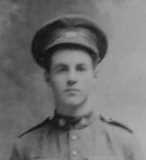
Hume Buckley Roderick, Captain, Welsh Guards. Hume was born on 17 June 1887, the eldest son of William Roderick and Ella Augusta Buckley Roderick (nee Nicholl), of Goodig, Pembrey. He was educated at Parkfield School, Hayward’s Heath, and at Rugby, where he was a member of the Cricket XI. He later qualified as a Solicitor and was a member of the firm of Roderick and Richards, Llanelli. At the outbreak of war, Hume was a Captain with the 4th Welsh, stationed at Pembroke Dock. He went with the 4th Welsh to Gallipoli, attached to the 53rd (Welsh) Division, but was invalided home due to illness. Hume then returned to Egypt to re-join his Battalion in 1916, and later that year returned home again, to take up a Commission in the Welsh Guards. Meanwhile, whilst back in the UK, on 9 November 1916 he married Barbara Garnons Williams, daughter of the late Lieutenant-Colonel R. D. Garnons Williams, who had been killed at Loos the previous year. The couple set up home at Tegfan, Devynock, Breconshire. Hume joined his new Battalion on the Western Front in December 1916 and took command of No. 3 Company, 1st Battalion, Welsh Guards. In July 1917 Hume was wounded at Ypres, but remained at the front, and moved with the Battalion from Ypres to positions near Cambrai, where they fought at the Battle of Cambrai throughout November and December 1917. Hume was killed in action at Cambrai on 1 December 1917, whilst leading his Platoon on a charge against a German Machine Gun Post. He was 30 years old, and is buried in Gouzeaucourt New British Cemetery, France.
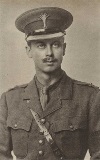
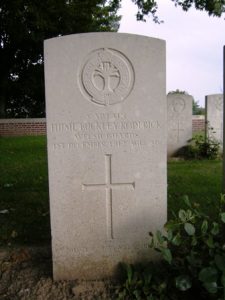
World War two, 1939-1945
Harvey Aylmer Garnons Williams, Engine Room Artificer, N21917, Royal Canadian Navy. Harvey was born on 3 March 1923, the son of Aylmer Francis Penry Garnons Williams and Irene Kathleen Garnons Williams (nee Perrin), of 45, 8th Street, Medicine Hat, Alberta, Canada. He had begun an apprenticeship as a carpenter after leaving school but left his job to enlist into the Royal Canadian Navy at Esquimalt, British Columbia on 24 March 1941 and was posted to Calgary as a Stoker 2nd Class, to his training. Harvey excelled over the coming months, passing several courses and was admitted to the Royal Naval College before becoming an Engine Room Artificer, and received several postings over the coming months. On 18 August 1943 Harvey was posted to HMCS Avalon, a Royal Canadian Naval Base at St. John’s, Newfoundland. On 20 May 1944 Harvey was flying aboard a Royal Canadian Air Force Catalina seaplane, Serial 9773, on a flight from Torbey Airport, Newfoundland, when the aircraft crashed, killing all eleven men aboard. Harvey was 21 years old when he died in the crash of the Catalina that day. The aircraft was never recovered, so Harvey is commemorated on the Halifax Memorial, Canada.
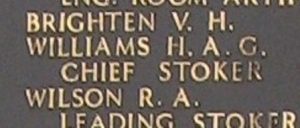
Henry Fenton Garnons-Williams, Lieutenant Colonel, 9670, Royal Welch Fusiliers. Henry was born at Abercamlais on 17 February 1896, the son of Gerald Garnons Williams and Minnie Lilian Garnons Williams (nee Court). The family also had a home at Rock House, Pembrey, where Henry’s father, Gerald, worked as a Land Agent. Henry enlisted into the army soon after the outbreak of war and was commissioned as Second Lieutenant into the Royal Welsh Fusiliers. He was drafted to France on 13 March 1915 and served for the duration of the war, rising to the rank of Captain and being Mentioned in Despatches for his work as a staff officer with the 38th (Welsh) Division. Henry married Katherine Paddison at Tiverton in 1925 and the couple settled at Dettingen House, Blackdown, Hampshire. By the time that the Second World War began, Henry was in command of the 1st Battalion, Royal Welch Fusiliers. The battalion embarked for France with the BEF, and took up positions on the River Dyle at Ottenburg, north of Wavre. Henry died in France before the German invasion of the low countries, on 10 November 1939. The 43-year-old was buried in Douai Communal Cemetery, France.
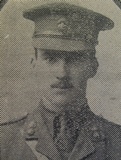
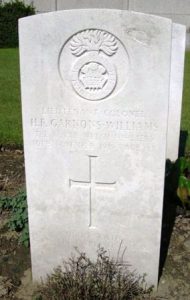
Joscelin Arthur Garnons Williams, Lieutenant Colonel, 23802, South Wales Borderers. Joscelin was born in 1902, the son of Reverend Arthur Garnons Williams and Anna Jane Garnons Williams (nee Glennie), of The Rectory, New Radnor. He was baptised at New Radnor on 3 January 1903. The family was residing at Llwyncwnfyn, Sennybridge by 1911. He was educated at Bromsgrove School, before enlisting into the South Wales Borderers, gaining a commission as Second Lieutenant in February 1923. Joscelin continued to serve with the regiment over the coming years, rising to the rank of Lieutenant Colonel. He married Elizabeth Mary Ellinor Riddell in the spring of 1940, and the couple had one child, a daughter Elizabeth Dawn. Joscelin gained the command of the 2nd Battalion, The King’s Regiment (Liverpool), which was in Gibraltar. Having spent five years in Gibraltar with the 1st Gibraltar Brigade, the 2nd King’s departed in December 1943 with the 28th Infantry Brigade to reinforce the 4th Infantry Division in Egypt. The battalion landed in Italy when the 4th Division joined the campaign in March 1944. On 11 May, the division conducted an opposed crossing of the Gari River during the final Fourth Battle of Monte Cassino. The 2nd King’s took part in the initial assault, but were lacking artillery support, and whilst traversing the Gari river sustained heavy losses due to mortar and artillery fire. Joscelin was mortally wounded during the crossing and died on 13 April 1944. The 42-year-old was buried on the battlefield near Venafro, but in February 1945 the war graves in the area were exhumed and re-interred in Cassino War Cemetery, Italy. His brother, Harold Penry Garnons Williams, was killed at Ypres in 1917.
